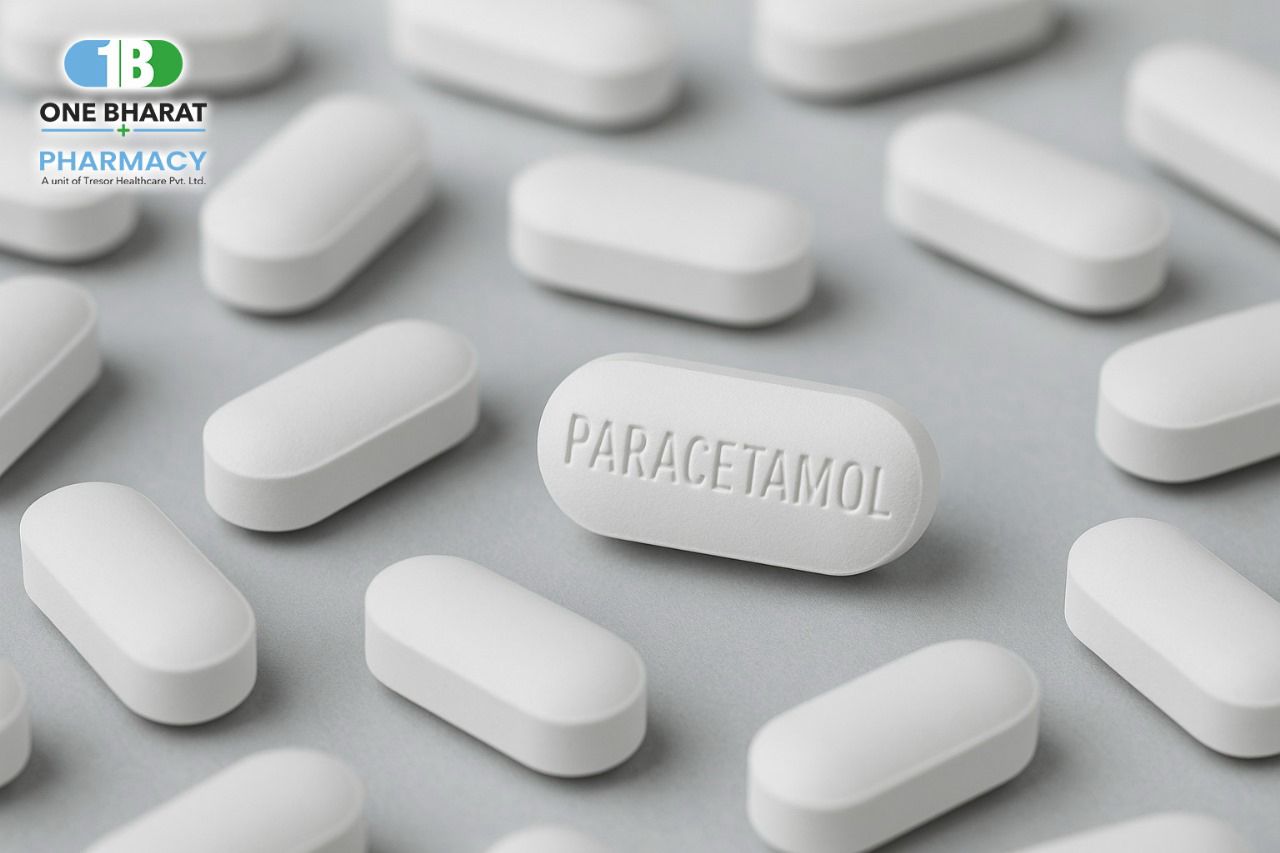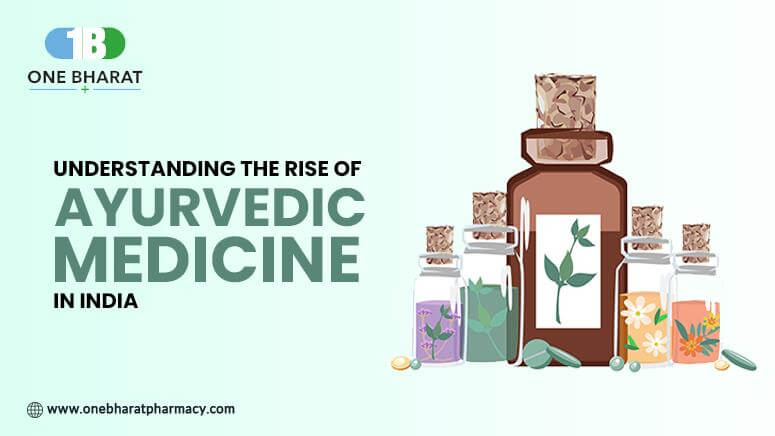Understanding the Rise of Ayurvedic Medicine in India
Jul 01, 2025
Ayurveda from the Sanskrit words āyu (life) and veda (knowledge) is India’s five-millennia-old system of natural healing. Instead of treating illness in isolation, it views body, mind, spirit, and environment as an inseparable whole.
In village kitchens and royal courts alike, its herb-infused oils, seasonal diets, and yogic breathing rituals once thrived as everyday common sense.
Fast-forward to 2025 and Ayurveda is anything but niche. Chyawanprash jars line supermarket shelves beside vitamin-C gummies, venture-funded apps offer five-minute doṣa quizzes, and government hospitals maintain fully staffed Ayurveda wings.
The meteoric growth of Ayurvedic medicine in India is reshaping how Indians think about prevention, immunity, and holistic wellness.
This article traces that journey from ancient scriptures to QR-coded herb supply chains, explaining why Ayurveda’s relevance is soaring.
A Brief Historical Overview
Vedic Origins and Classical Texts
The earliest Ayurvedic ideas glimmer in the Rig Veda (c. 1500 BCE), which praises healing plants as earthly embodiments of divine power. Over centuries, wandering physician-sages distilled that oral lore into comprehensive medical encyclopaedias.
-
Charaka Samhita (c. 100 BCE) formalised internal medicine around the three humours Vāta, Pitta, Kapha. It mapped disease causation, pharmacology, diagnostic pulse reading, and daily-routine advice (dinacharya) that remains relevant today.
-
Sushruta Samhita, its surgical counterpart, catalogued more than 300 procedures, from cataract extraction to rhinoplasty using cheek flaps — techniques astonishingly close to modern plastic surgery standards.
-
By the 7th century CE, Vāgbhaṭa synthesised eight distinct branches in the Aṣṭāṅga Hṛdaya: paediatrics, psychiatry, toxicology, rejuvenation, and more, giving Ayurveda a breadth unmatched by many contemporary systems.
Cultural Diffusion and Colonial Eclipse
Trade routes ferried Indian botanicals to Sri Lanka, Southeast Asia, and Tibet, spawning sister traditions such as Javanese jamu and Thai herbal saunas.
During British rule, biomedicine gained legal primacy and indigenous knowledge was sidelined. Yet Ayurveda survived in household tonics, temple dispensaries, and family lineages of vaidyas (traditional physicians). Independence in 1947 rekindled national pride, setting the stage for revival.
Why Ayurveda Is Surging Again
Health Burden: Lifestyle Diseases and Preventive Mind-set
India’s rapid urbanisation has fuelled record rates of diabetes, hypertension, polycystic ovary syndrome, and anxiety. As late-night screens replace early-morning yoga and ultra-processed snacks trump home-cooked lentils, chronic ailments are striking ever younger populations.
Ayurveda’s food-first, routine-first ethos offers a compelling antidote. Simple prescriptions like warm water at dawn, digital detox after sunset, or 15 minutes of nadi śodhana breathing—help stressed professionals manage weight, sleep, and mood without side-effect-laden pills.
State Patronage: Ministry of AYUSH
Institutional backing turbo-charged growth. Founded in 2014, the Ministry of AYUSH treats Ayurveda, Yoga, Unani, Siddha, and Homeopathy as pillars of national health policy.
Its budget has risen steadily, financing 5,000+ Ayurveda wellness centres, pharmacovigilance labs, and post-graduate research chairs. Uniform syllabi and common exit exams mean BAMS (Bachelor of Ayurvedic Medicine & Surgery) graduates now undergo structured internships akin to MBBS doctors.
Pandemic Catalyst: Immunity on Everyone’s Mind
COVID-19 turned immunity from buzzword to survival mantra. Lockdowns nudged families to whip up ginger-turmeric kaḍhās, practise steam inhalation, and revive copper-pot water storage.
Surveys in Delhi and Pune showed Ayurvedic OTC sales jumping 30–40 percent in 2020-21. Even as vaccines rolled out, consumers continued daily herbal routines, cementing Ayurveda as a complementary health insurance policy.
Investment and Digital Disruption
Analysts value India’s Ayurveda sector at about USD 10 billion (2024) with double-digit CAGR. Venture capital has poured into:
-
Tele-Ayurveda platforms offering video consults, AI-powered symptom checkers, and doorstep medicine delivery.
-
D2C nutraceutical brands shipping vegan Ashwagandha gummies in compostable packs.
-
Agritech start-ups that contract-farm pesticide-free Tulsi and standardise active-compound levels via satellite-monitored fields.
Search volumes for phrases like “Ayurveda benefits,” “natural healing herbs,” and “holistic wellness India” have mirrored that financial enthusiasm.
Integrating Ayurveda into Twenty-First-Century Healthcare
Mainstream Retail and Omni-channel Reach
Walk into Apollo Pharmacy or Reliance Smart Point and you’ll spot Ayurvedic cough syrups, liver tonics, and skincare serums sharing prime real estate with mainstream brands.
E-commerce marketplaces list tens of thousands of Ayurvedic SKUs, while independent portals such as One Bharat Pharmacy use content marketing to rank for long-tail queries like “best Ayurvedic remedy for joint pain.”
Telemedicine and AI Diagnostics
India’s telehealth market, projected to cross USD 5 billion by 2030, increasingly features Ayurvedic solutions.
Smartphone cameras capture tongue coatings for digestive analysis, wearable data calibrates doṣa imbalances, and chatbots nudge users to log sleep hours or pranayama sessions.
These digital touchpoints not only widen access but also collect outcome data, bridging the evidence gap that critics often cite.
Integrative Clinics and Research Collaborations
Premier institutes such as the All India Institute of Ayurveda collaborate with AIIMS and ICMR on double-blind trials of poly-herbal formulations for osteoarthritis, dengue, and even long-COVID.
State hospitals in Maharashtra and Kerala run integrative cardiology units where Ayurvedic rasāyana tonics complement beta-blockers. Patients appreciate fewer adverse reactions and a renewed sense of agency in their healing journey.
WHO Centre and Global Validation
India’s credibility leapt forward with the 2022 launch of the WHO Global Centre for Traditional Medicine in Jamnagar. Tasked with data analytics, regulation, and innovation, the centre signals to the world that Ayurveda is moving from anecdote to evidence-based practice. Such international recognition accelerates export prospects for certified Indian brands.
Ayurveda and Western Medicine: Partners, Not Rivals
Western biomedicine excels at acute emergencies — think appendectomies, antibiotics, MRI scans. Ayurveda shines in chronic disease management, psychosomatic balance, and lifestyle re-engineering. Patients increasingly combine both:
-
A hypertensive office worker may continue antihypertensive drugs while adopting Vāta-pacifying diets, morning walks, and Arjuna bark decoctions.
-
Chemotherapy patients often use Ayurvedic immuno-modulators like Guduchi to combat fatigue and improve white-cell counts, under oncologist supervision.
Challenges remain: standardising raw-herb supply, ensuring purity, and generating large randomized controlled trials. Yet regulatory reforms, DNA barcoding of botanicals, and AI-assisted phytochemistry are closing those gaps.
Public Perceptions and Consumer Trends
Social Media Credibility
Search #AyurvedaLifestyle on Instagram and you’ll scroll through turmeric almond milk, copper water bottles, and tongue scrapers—often endorsed by celebrities. Such influencer engagement boosts trust among Gen Z and millennials while keeping Ayurveda culturally “cool.”
Eco-Ethical Purchase Drivers
Mindful shoppers want cruelty-free testing, fair-trade sourcing, and zero-plastic packaging. Brands that display farm-to-pharmacy traceability stories win both hearts and SERP positions, as Google’s Helpful Content Update favours first-hand expertise.
Wellness Tourism and Experience Economy
From Himalayan detox retreats costing ₹30,000 a week to Kerala’s luxury Panchakarma resorts charging USD 500 per night, experience-driven wellness tourism has rebounded past pre-COVID levels. Local artisans gain livelihoods, and visitors carry home Ayurvedic teas—extending the global footprint.
Future Outlook: Opportunities and Challenges
-
Evidence & Innovation
-
Multi-centre clinical trials on adaptogens like Bacopa for cognitive decline.
-
Smart capsules releasing herbs at targeted gut pH levels.
-
Regulation & Quality Control
-
QR codes on every batch, letting users trace farms, lab tests, and carbon footprints.
-
Harmonised ISO and WHO benchmarks facilitating exports to the EU and US.
-
Digital Ecosystems
-
AR-based anatomy modules for BAMS students.
-
Blockchain-verified supply chains integrated with carbon credits.
Conclusion:
Ayurveda’s renaissance reflects India’s broader pursuit of progress rooted in tradition. Stimulated by lifestyle-disease anxiety, robust government backing, digital innovation, and growing global respect, Indian traditional medicine is no longer alternative but integral. Challenges around standardisation, clinical evidence, and professional parity persist, yet momentum favours solutions rather than stagnation.
For the 1.4 billion Indians seeking preventive, personalised, and eco-conscious care, Ayurveda offers a time-tested, culturally resonant path.
In doing so, they will not only thrive commercially but also help shape a holistic, sustainable healthcare paradigm for India and the world.
Disclaimer:
Recent Post

Why Urban India Prefers Online Pharmacies Post-COVID A Deep

Telemedicine: The Digital Bridge Connecting Patients to Healthcare
_CAT_1753709847.png)
Does Scanning a QR Code on Medicine Packaging Really Confirm Authenticity? Here's the Truth
_CAT_1753374525.png)
Bringing India’s Pharmacy to Your Doorstep.
_CAT_1753281249.png)
King Barriers in Healthcare: One Bharat Pharmacy Rolls Out Seamless Online Medicine Delivery Across Delhi NCR

Is Online Pharmacy the Future of Healthcare Access in India?

Best Protein Supplements to Buy Online in 2025

FACT CHECK: Is Paracetamol Truly the World’s Most Dangerous Drug?

Fact‑Check: Does Tirzepatide (Mounjaro/Zepbound) Aid Weight Loss & Diabetes?

How to Safely Buy Medicine Online in India: A Complete 2025 Guide

